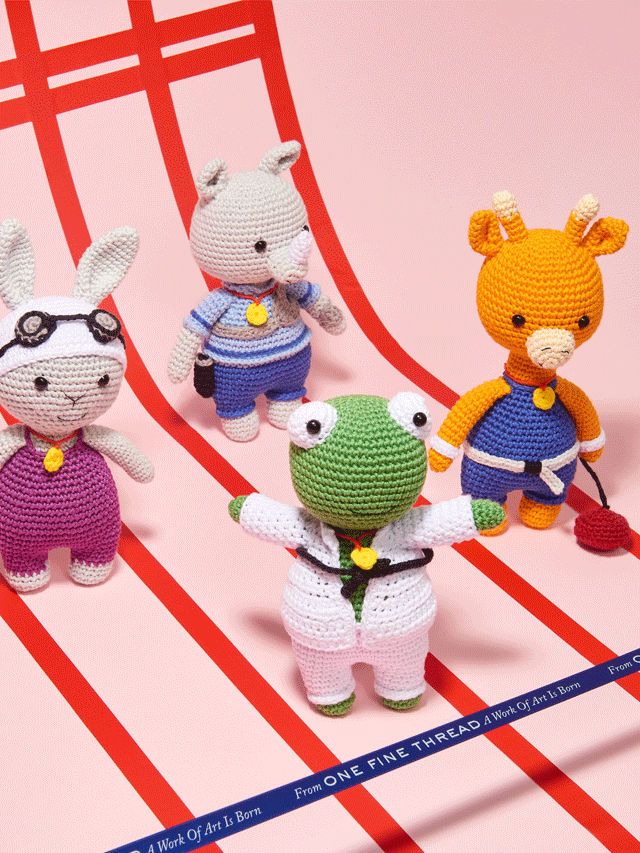Anyone who regularly enjoys craft will tell you that they do it not just because they like what they can create but also because it makes them feel better. It’s an easy shortcut to a more relaxed state of mind that separates us from our troubles and the stresses of daily life. In the same way sport builds and protects health and wellbeing, craft is unequivocally good for you. The connection between sport and these benefits is so universally understood that most of us strive to make sport part of our regular routine. Dr Anne Kirketerp’s forthcoming book Craft Psychology: How Crafting Promotes Health, presents a comprehensive summary of the science of why crafting innately improves our wellbeing. She builds the case for taking the same intentional approach to using craft as part of our regular self-care.
Regardless of what we create, the process of crafting can be a powerful tool for building and protecting wellbeing. For some, taking up a regular craft practice might feel like an easier start on a journey of wellness than starting a new exercise regime. It can feel more accessible, a gentler way into wellness.
Craft is a well-known and natural method to create peace, joy, and meaning. But many are not aware of the psychological mechanisms that deliver these benefits, and even fewer know how to use craft psychology in a modern everyday life to maintain well-being and soothe or counteract a range of negative emotions such as symptoms of stress, despondency, and unrest.
What benefits does craft deliver?
The field of craft psychology has gathered very strong evidence that craft has tangible health benefits. Kirketerp lists an impressive and in some cases unexpected list of benefits. We might expect a list of benefits that includes relaxation, reduced stress/anxiety and a general increase in wellbeing as well as a reduction in loneliness and social isolation but the list also includes concrete physical benefits such as:
Lowers blood pressure
Alleviates mental illnesses such as anorexia and schizophrenia
Alleviates addiction
Diverts focus from chronic pain and illness
Strengthens muscular mobility
Slows early stages of dementia
Stimulates neuroplasticity
Craft balances the nervous system and helps us achieve beneficial flow states
Engaging in craft activities delivers this multitude of benefits by helping us access different neurological states. There are two different routes to unlocking the benefit of crafting that Kirketerp recommends we intentionally seek to employ. Firstly, craft is an easy route into relaxation. The small repetitive movements needed to create stitches can activate the parasympathetic nervous system and help us change the neural network we are using. This reduces harmful rumination on negative thoughts and helps us build pathways so we can drop into relaxed states more easily. Alternatively, choosing a craft project that is fully absorbing because it requires our full attention can also tip us into a helpful state of self-forgetfulness known as “Flow”. Flow is regarded as an optimal state of human experience where how we feel and how we perform are at their best. Kirketerp explains: “When we experience flow through motivating challenges, the brain releases dopamine and serotonin. This helps to restore the brain's ability to recover from prolonged negative stress.”


Craft is undervalued
Kirketerp’s work is a call to action for us to take craft more seriously. It can be so much more than a pleasurable way to pass time. We need to let go of the outdated idea that it’s only for grandmothers or those who have creative flair and skill. If watching the athletes competing in Paris this summer has nudged you to reengage with sport, then Dr Kirketerp’s book will have you reaching for your next craft project as much as your trainers. The book, which is being released in English, in early August, combines a literature review of over 420 scientific articles with Kirketerp’s own empirical data. It explains the science behind the benefits of craft and how to organise craft as part of your regular self-care routine to maximise its effects. Kirketerp is a passionate proponent of using a regular craft practice to support wellbeing. She hopes her work will contribute to a universal understanding that, just like sport, craft is a tool we can all use to live happier, healthier and longer lives.